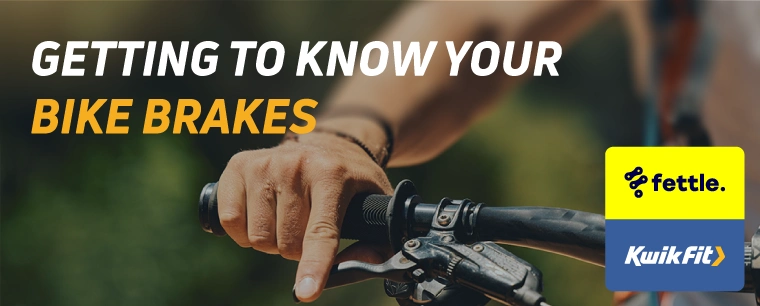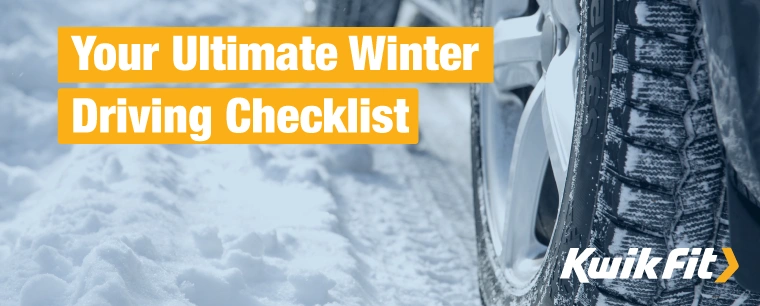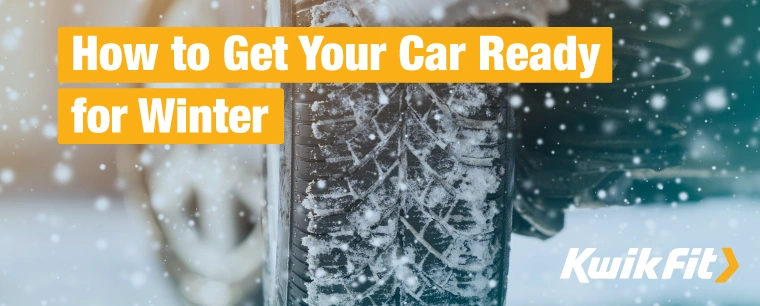Getting to Know Your Bike Brakes
Kwik Fit | Friday 26th July 2024 11:00am

As our cities and towns continue to become greener, cycling as a form of transportation is becoming more popular. In 2021, bicycle sales in Great Britain amounted to approximately 3.25 million - an 11% increase on the previous year.
With more bicycles on the road, it’s not just important to maintain bike brakes for performance purposes, but for the safety of cyclists and other road users.
Whether you’re new to cycling or brake maintenance, we’ve put together a useful guide to help you understand your bike brakes better, including how to adjust your cable brakes and identify signs of wear, and how to maintain your hydraulic brake system.
Read on for more.
Adjusting cable brakes
Bicycle cable brakes are an important part of the braking system. When a cyclist squeezes the brake levers, the cable between the brake lever and brake caliper or brake arm is pulled, which allows the bicycle to slow down to a stop.
It’s imperative that the brake cable is maintained to ensure the bicycle is performing properly and safe to ride, otherwise this can lead to accidents resulting in potential injuries.
Here’s how to adjust your cable brakes if the cable is loose:
- Test your brakes by squeezing the front and rear brake levers. If the levers touch the handlebar, the cable is too loose and needs to be adjusted.
- For minor adjustments, locating the barrel adjuster for the loose cable and loosening it slightly (anti-clockwise) can fix the problem. Squeeze the brake lever to see if the problem is resolved.
- If the problem persists, keep the barrel adjuster loose and unscrew the bolt holding the cable on the brake caliper by using an allen key - making sure not to unscrew the bolt all the way.
- Pull the cable outwards to increase the tension, but not too tight that the tyre can’t turn at all. Tighten the bolt afterwards.
- Tighten the barrel adjusters and test the brake levers afterwards to ensure the space between the lever and handlebar is 3.8cm.
How to know when brake cables are worn and need replacing
Brake cables will eventually wear over time due to stretching and exposure to different types of weather. There are several signs that indicate a brake cable is worn and needs replacing:
- Fraying and rust
- Difficulty pulling the brake lever
- Sluggish braking
- The brake lever wobbling in the brake lever body
If this is the case for your bicycle’s brake cable, it’s important to reach out to a professional as soon as possible to get your cable replaced.

Maintaining hydraulic brake systems
Hydraulic brakes (also known as hydraulic disc brakes) are different to brake cables. Instead of a mechanical component, this braking system uses hydraulic fluid to transfer force from the brake lever to the brake pads.
Due to their faster speeds and harder stops, hydraulic brakes are most popular on mountain bikes and e-bikes. They are also more likely to last longer and require less maintenance than brake cables.
Identifying when brake pads need replacing
The key sign of maintenance for hydraulic brakes is worn out brake pads. There are a couple of steps that you can take to determine if your brake pads are worn and need replacing.
These are to:
- Visually inspect the brake pads, specifically the pad thickness. If the pads are below the manufacturer’s recommended thickness, they need to be replaced.
- Monitor the performance of your brake pads. Worn brake pads will normally reduce braking power and increase braking distance.
It’s important to note that brake pads are not an easy fix, so if they need replacing it’s imperative that you reach out to a professional for help.
Spotting other hydraulic brake issues
This being said, worn brake pads are not the only issue that hydraulic brake systems can encounter.
Cyclists are recommended to check for fluid leaks around the caliper and brake lever as this can indicate a seal needs replacing or the bicycle needs servicing.
Additionally, if you start to notice uneven brake pad wear, your bicycle will likely require a service and repair. The reasons for uneven brake pad wear can range from worn or broken spring clips to brake pads being fitted incorrectly.
If you experience any of the issues listed above, reach out to an expert or book a bicycle service as soon as possible to ensure your hydraulic brakes are working optimally at all times.
Get your bike serviced at Kwik Fit
If you’ve identified worn brake pads or noticed some issues with your cable brake or hydraulic brake systems, you’ll be pleased to know that you can book a bicycle service or repair at a select number of our local Kwik Fit centres.
Our partnership with Fettle allows us to offer MOTs, servicing, and full stripdown and rebuilds. Get in touch with our expert team to discuss your requirements or concerns.
In the meantime, you can keep up-to-date with motoring and bicycle news and trends on our blog.
Any facts, figures and prices shown in our blog articles are correct at time of publication.
Featured Articles
Is Your Car Battery Ready for Winter?
Monday 11th November 2024
Is the UK on the verge of ‘the coldest winter for 50 years?’ Even if El Niño doesn't hit the UK this winter, reduce the risk of a winter breakdown by making sure your car battery is winter-ready.
Your Ultimate Winter Driving Checklist
Monday 31st October 2022
Driving in the colder months presents many challenges. Breakdowns are far more common in winter, so make sure you’re prepared with these essentials.
How to Get Your Car Ready for Winter
Wednesday 28th September 2022
Winter can be a harsh season for your car but planning ahead by carrying out some basic maintenance and packing some essential kit should help you avoid a winter breakdown.







